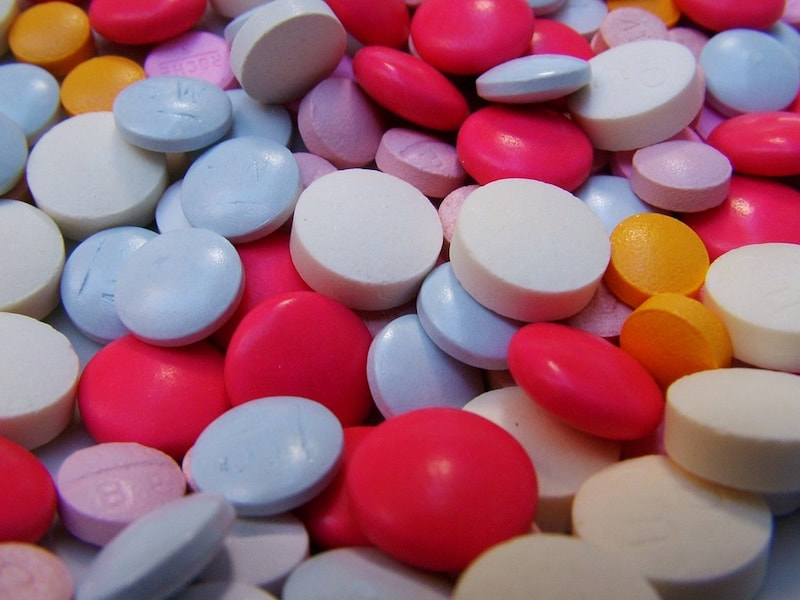Symptom Finder - Polydipsia
POLYDIPSIA
Excessive thirst is best analyzed by the application of physiology. Increased desire for water may be due to a decreased intake, as in prolonged abstinence, vomiting of pyloric stenosis and intestinal obstruction, and diarrhea of any cause. Poor transport of fluid in hemorrhagic or vasomotor shock and CHF may be the cause.
Anything that decreases the effective circulatory volume, such as hypoalbuminemia, may cause retention of salt and consequent thirst through the rennin– angiotensin–aldosterone mechanism. Increased output of water may be responsible for polydipsia. The increased output may result from a solute diuresis in diabetes mellitus and hypercalcemic states (e.g., hyperparathyroidism); an increased glomerular filtration rate in hyperthyroidism; inability of the kidney to respond to antidiuretic hormone (ADH) in chronic glomerulonephritis, aldosteronism, and renal diabetes insipidus; or a lack of ADH in diabetes insipidus. Increased output of salt and water in excessive sweating of work or fever will lead to thirst. This mechanism is an additional factor in hyperthyroidism and diabetes mellitus where diaphoresis is common.
A neurosis may be responsible for polydipsia in neurogenic diabetes insipidus. Drugs such as lithium and demeclocycline hydrochloride (Declomycin) can damage the distal tubule and cause renal diabetes insipidus. Drugs such as belladonna alkaloids, amitriptyline hydrochloride, parasympatholytic drugs, and gallic acid may cause a dry mouth and an excessive thirst. Alcohol may cause excessive thirst by inhibiting ADH.
Approach to the Diagnosis
The approach to the diagnosis of polydipsia involves establishing the presence or absence of other symptoms such as polyuria, polyphagia, weakness, and weight loss. Polydipsia with polyuria and excessive appetite (polyphagia) should suggest diabetes mellitus or hyperthyroidism, whereas polydipsia with polyuria alone should suggest a form of diabetes insipidus (pituitary, renal, or psychogenic). The laboratory workup involves checking intake and output, blood sugars, electrolytes, and a thyroid profile.
Other Useful Tests
1. Urinalysis (renal or pituitary diabetes insipidus)
2. Serum and urine osmolality (diabetes insipidus)
3. Serum parathyroid hormone (PTH) level (hyperparathyroidism)
4. Serum ADH level (diabetes insipidus)
5. 24-hour urine calcium (hyperparathyroidism)
6. Serum growth hormone, LH, and FSH levels (pituitary tumor)
7. Hickey–Hare test (diabetes insipidus)
8. Pitressin test (renal diabetes insipidus)
9. CT scan or MRI of the brain (pituitary tumor)
10. Microscopic examination of the urinary sediment (chronic renal disease)
Excessive thirst is best analyzed by the application of physiology. Increased desire for water may be due to a decreased intake, as in prolonged abstinence, vomiting of pyloric stenosis and intestinal obstruction, and diarrhea of any cause. Poor transport of fluid in hemorrhagic or vasomotor shock and CHF may be the cause.
Anything that decreases the effective circulatory volume, such as hypoalbuminemia, may cause retention of salt and consequent thirst through the rennin– angiotensin–aldosterone mechanism. Increased output of water may be responsible for polydipsia. The increased output may result from a solute diuresis in diabetes mellitus and hypercalcemic states (e.g., hyperparathyroidism); an increased glomerular filtration rate in hyperthyroidism; inability of the kidney to respond to antidiuretic hormone (ADH) in chronic glomerulonephritis, aldosteronism, and renal diabetes insipidus; or a lack of ADH in diabetes insipidus. Increased output of salt and water in excessive sweating of work or fever will lead to thirst. This mechanism is an additional factor in hyperthyroidism and diabetes mellitus where diaphoresis is common.
A neurosis may be responsible for polydipsia in neurogenic diabetes insipidus. Drugs such as lithium and demeclocycline hydrochloride (Declomycin) can damage the distal tubule and cause renal diabetes insipidus. Drugs such as belladonna alkaloids, amitriptyline hydrochloride, parasympatholytic drugs, and gallic acid may cause a dry mouth and an excessive thirst. Alcohol may cause excessive thirst by inhibiting ADH.
Approach to the Diagnosis
The approach to the diagnosis of polydipsia involves establishing the presence or absence of other symptoms such as polyuria, polyphagia, weakness, and weight loss. Polydipsia with polyuria and excessive appetite (polyphagia) should suggest diabetes mellitus or hyperthyroidism, whereas polydipsia with polyuria alone should suggest a form of diabetes insipidus (pituitary, renal, or psychogenic). The laboratory workup involves checking intake and output, blood sugars, electrolytes, and a thyroid profile.
Other Useful Tests
1. Urinalysis (renal or pituitary diabetes insipidus)
2. Serum and urine osmolality (diabetes insipidus)
3. Serum parathyroid hormone (PTH) level (hyperparathyroidism)
4. Serum ADH level (diabetes insipidus)
5. 24-hour urine calcium (hyperparathyroidism)
6. Serum growth hormone, LH, and FSH levels (pituitary tumor)
7. Hickey–Hare test (diabetes insipidus)
8. Pitressin test (renal diabetes insipidus)
9. CT scan or MRI of the brain (pituitary tumor)
10. Microscopic examination of the urinary sediment (chronic renal disease)

